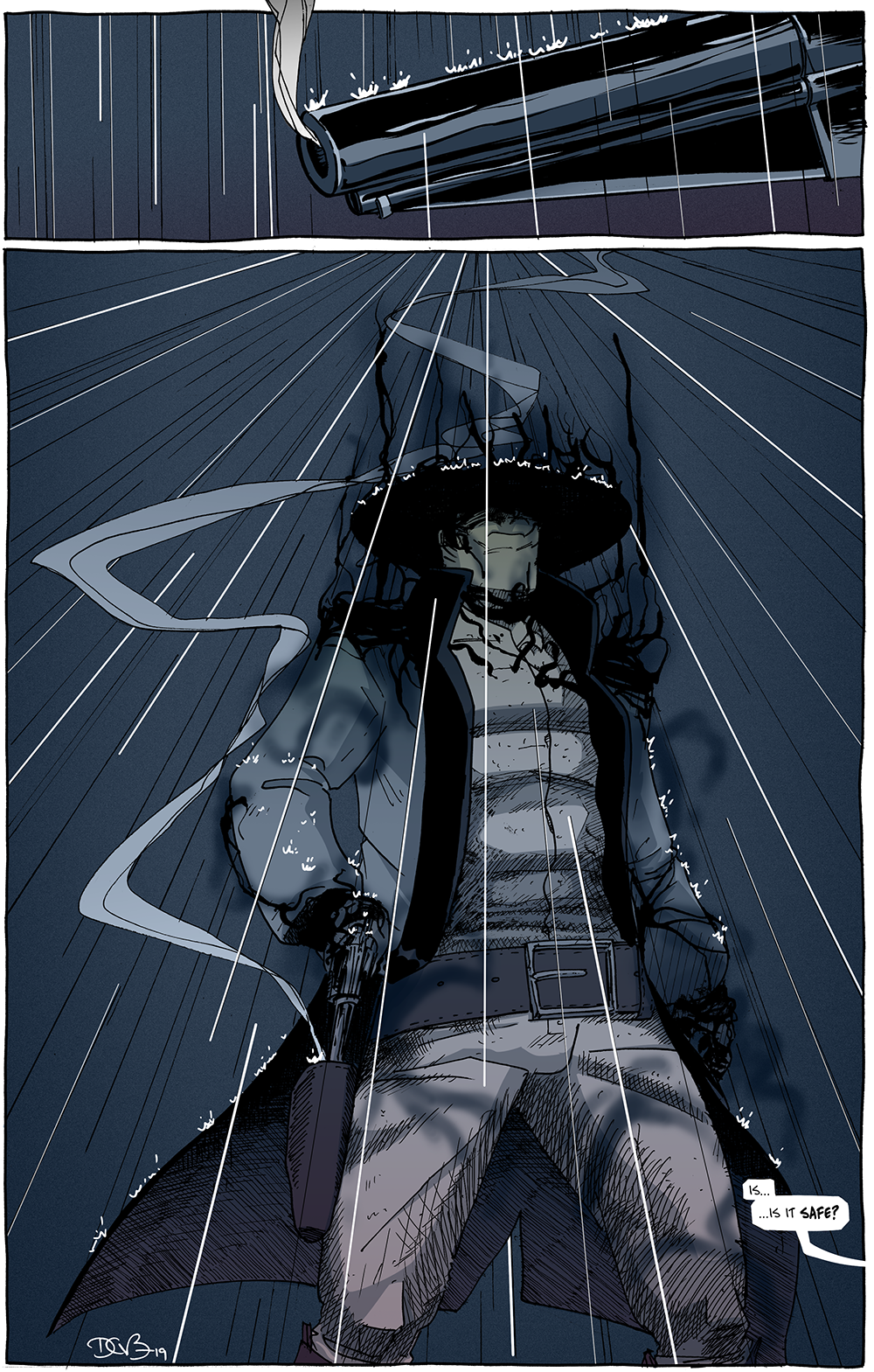Water and Smoke
I spent a fair amount of time thinking about how to iterate on the darkness/corruption––or what I call in-house “the creep”––that envelops Long John when he steps into his dark place since we last saw it in Chapter 2.
I didn’t have as many artistic tools at my disposal back then and I really wanted to make sure that I was capturing the look I wanted this time around because it was a bit of a last-minute choice when it surfaced in Chapter 2. That original version was much more smokey and flat. While it generally gave off the dark tone that I wanted, it should have carried more of an unsettling nature than what I ended up using.
This time around, the general aesthetic I aimed for was somewhere between fungal and varicose.
I originally created these (starting a few pages ago) by getting a small eyedropper and squeezing a dollop of ink on the page and turning it upside down, letting it drip and run. It looked really cool, but it also took forever to do. After a few further attempts, I approximated the look by sort of drawing the tendrils with the eyedropper, which yielded satisfying results.

The first appearance of “the creep” in Chapter 4 was created by dropping pools of ink on the page and turning it upside down, letting gravity push the ink up the page on it
I was nervous to reintroduce “the creep” again in this chapter because I worry––as I did back in Chapter 2 when it first appeared––that it gave the wrong impression. Again, there are no supernatural elements in Long John, but that doesn’t mean there aren’t mysterious or weird things happening––it’s just that the reason for it isn’t yet explained. I will explain that “the creep” is a visual metaphor rather than a supernatural ailment, which is why it wasn’t on the previous page. All of what we saw on that page (realistically rendered or not) was simply what was happening in the moment, the page as witness rather than the page as storyteller. It’s when we’re in “storyteller mode” that I feel more comfortable working in things like “the creep” because, in a comic called Long John, I have to be most interested in telling Long John’s story, using all the tools––and the peculiarities and benefits of it being a comic book––at my disposal to do so. While “the creep” definitely ties to the story, it’s more meant to illustrate Long John’s psyche and what this type of behavior does to a person rather than an actual malevolent goo controlling his actions. If you want that, watch superhero movies.




Discussion ¬